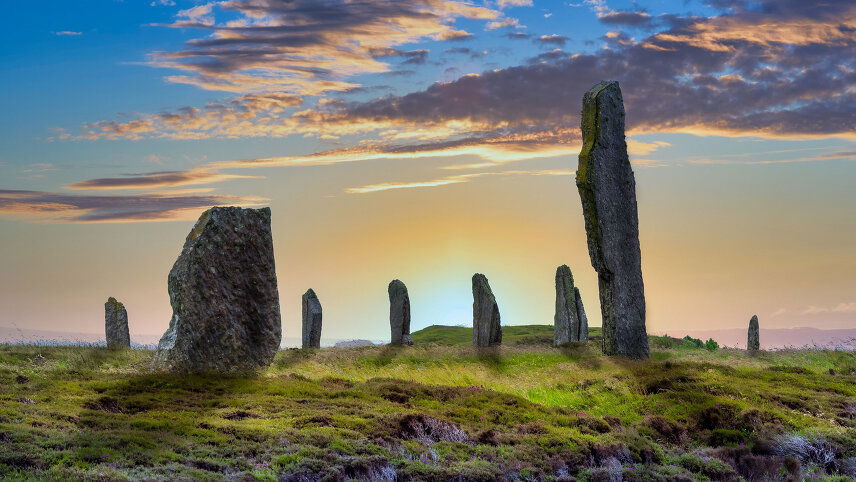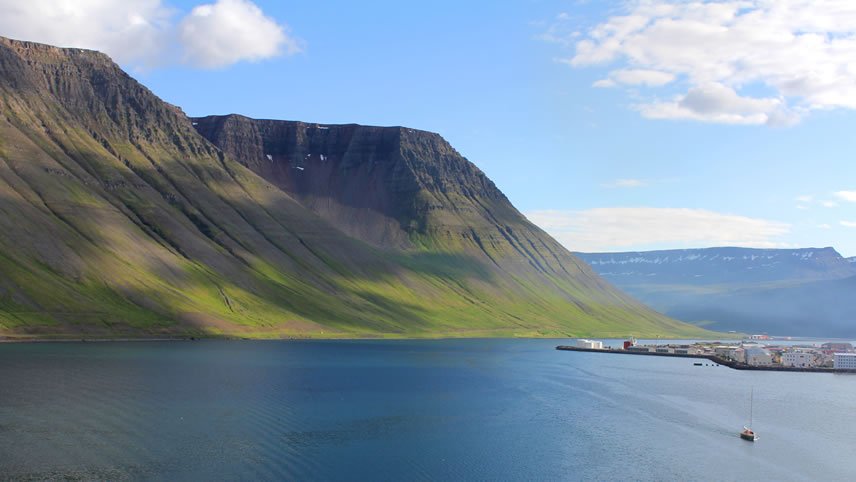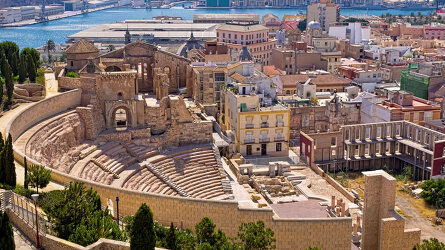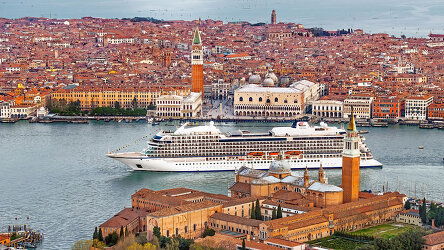Overview
Itinerary
Greenwich, a borough of London, is home to the Royal Observatory. From here, the world's longitude is measured from the prime meridian, and Greenwich Mean Time sets the global time standard. At the port, the clipper ship Cutty Sark , one of Greenwich's renowned historic landmarks, is preserved as a fascinating museum. Upriver, London is home to Buckingham Palace, the Houses of Parliament and Westminster Abbey. In addition, this major economic and cultural hub boasts a long tradition of arts and architectural innovation—from Shakespeare's Globe Theater to West End musicals.
Greenwich is home to several iconic maritime institutions. Royal Naval College is a major symbol of Britain's seafaring heritage and the architectural centerpiece of Greenwich. It opened as a hospital for sailors in 1712 and served as the Royal Navy's educational institution from 1873 to 1998. Today, its hallowed halls whisper of the days when Britannia ruled the waves. The National Maritime Museum is the world's largest, chronicling England's seafaring endeavors in its compelling collection of art, maps and countless memorabilia, including the first marine chronometer.
Most famously known for its dramatic white-chalk towering cliffs, Dover is the nearest city to France across the English Channel. Its strategic location as a doorway into England has earned it the moniker “Key to England.” As the port was under constant threat because of its location, the massive Dover Castle overlooking the channel grew over the centuries to become the nation's largest edifice and remains so today. Dover also served as a bastion and command center during World War II.
About 350 miles long, the English Channel separates southern England from northern France. William the Conqueror crossed these waters to become king of England after the Norman Conquest of 1066. The most triumphant crossing unfolded on D-Day, when Allied troops landed on Normandy's shores. The channel's narrowest point stretches about 20 miles between Dover and Calais. Dover's famed cliffs can be seen from a distance as a long white strip resting on the horizon.
Dún Laoghaire is a suburb of Dublin, Ireland's UNESCO City of Literature. Famed as the birthplace of many of Ireland's finest writers, from James Joyce and Oscar Wilde to Samuel Beckett, Dublin and its people have long celebrated the written word. The library of Trinity College is the hallowed home of the inspiring 9th-century illuminated Book of Kells , yet there is much more to explore. From the soaring St. Patrick's Cathedral, the nation's spiritual touchstone, to Dublin Castle, the city is a vibrant hub of cultural gems.
Holyhead is a cozy coastal enclave on the isle of Anglesey off the northwestern tip of Wales. This region boasts the greatest concentration of ancient burial chambers and standing stones in Britain. Holyhead is contained within one of the few three-walled Roman forts in Europe, protected on the fourth side by the sea. The historic St. Cybi's Church lies at the fortress's center and the excellent Maritime Museum chronicles local seafaring history. Locals are as likely to speak Welsh as English; almost two-thirds of the youth speak this fascinating tongue.
Liverpool is celebrated as the “World Capital of Pop;” 56 musicians born and bred here have had #1 singles. Most notably, the legendary Beatles—John, Paul, George and Ringo—hailed from this port city. But it is more than music that has put Liverpool on England's cultural map. Long an important center for maritime commerce, its storied waterfront is home to many buildings of historic, architectural and cultural significance, including a spectacular trio of palatial, early 20th-century buildings known as the “Three Graces,” and the revitalized Royal Albert Dock.
A major port heralded for its shipbuilding heritage, Belfast has undergone a cultural and architectural renaissance unrivaled in the rest of Europe. The influence of Britain is everywhere in this polished capital of Northern Ireland. Some of its most striking buildings exude Victorian flair and cosmopolitan elegance amid its famous Irish charm. Along the Golden Mile, high-end boutiques are reminiscent of those found in Paris, and the opulent Grand Opera House stands as a hub of Belfast culture.
Ullapool enjoys one of the most remote settings in the United Kingdom on the pristine shores of Loch Broom. This tiny town, dotted with distinctive New Zealand cabbage trees, is the largest community for miles surrounded by the stunningly scenic Western Isles, dramatic mountain peaks piercing the sky and unspoiled wilderness. Ullapool's beauty lies in its tranquility. A launchpad for ferries to the stunning Western Isles, this former herring port village is also a popular gateway for walkers, adventurers and nature lovers.
The history of the Scottish Orkney Islands dates back millennia. Neolithic remains, including the ancient site of Brodgar, predate Stonehenge and the Egyptian pyramids. The 13th-century Norse Orkneyinga Saga told of Vikings who ruled here. Later, the earls took over, and the French Renaissance palace that remains is a legacy to their grandeur. Another castle, Balfour, stands regally in a stark landscape. While the northern Europeans greatly influenced this hauntingly beautiful archipelago, consider the Italian Chapel, built by the hands of Italian prisoners during wartime.
Edinburgh has been Scotland's capital since the 15th century, despite the fact that the Union of the Crowns moved it to London in 1603. There is no capital quite like Edinburgh, with its gorgeous setting on green rocky hillocks and splendid views of the sea. Edinburgh Castle, home of the Scottish Crown Jewels and countless medieval treasures, overlooks the city from Castle Rock. The Royal Mile unfurls Edinburgh's architectural gems in all their finery, from the Canongate to St. Giles's Cathedral to the Palace of Holyroodhouse, the Scottish residence of British royalty.
Scotland's third-largest city embraces a strong coastal culture. Torry Battery, a 19th-century artillery battery, offers one of the UK's best places to spot bottlenose dolphins. The region's maritime history is on full display at the quaint former fishing district of Footdee, where narrow lanes between stone cottages lead to a surfing hotspot, Aberdeen Beach. In the heart of the city, with its thriving culinary scene, artisanal producers are flourishing; two of Aberdeen's best-loved are Mackie's ice cream and Six North, one of Scotland's leading craft brewers.
The Shetland Islands are characterized by cultural traditions and dramatic landscapes. An incredibly scenic land, this archipelago is one of Scotland's most remote island outposts. Lerwick is a gateway to some of the Shetland Islands' most beloved residents—the Shetland pony. These diminutive equines can grow up to 46 inches in height and are distinguished by their short, shiny coat in the summer, and thick double coat in the winter, with a long mane and tail. These delightful ponies can be seen grazing and roaming freely throughout the archipelago.
Bergen is home to the Hanseatic League's only kontor (trading enclave) still in existence. Bryggen wharf, a row of timbered Hanseatic warehouses along a quaint quay, is a UNESCO World Heritage Site. Narrow wooden walkways are flanked by parallel rows of small, vibrantly painted buildings overlooking the picturesque Vågen Harbor. This is perhaps the most charming district of Bergen and a delight to explore, from its tight-knit community of workshops where artisans sell their wares to its cafés where freshly prepared smørbrød , or open-faced sandwiches, are on the menu.
Bergen, an ancient city with deep Viking roots, is located in the heart of western Norway, nestled between seven gargantuan mountain peaks. It is also the gateway to the country's magnificent fjords, including the Hardangerfjord and Sognefjord. Founded in 1070 on what was a Viking settlement, Bergen was Norway's capital during the 13th century; today, it is the second-largest city in Norway. Not to be missed is a stroll through the picturesque outdoor fish market, Fisketorget, where the fresh catch of the sea awaits—from cod and prawns to local caviar and icy oysters.
Bergen's Bryggen has come to serve as an important window into both Norway's maritime legacy and architectural traditions. Totaling more than 60 buildings, with the earliest dating to the 18th century, these distinct structures are all that remain after the numerous fires that have ravaged Bergen. They were largely reconstructed within their original property lines, with their restoration and continual preservation staying true to medieval Norwegian building techniques, materials and tools. A UNESCO World Heritage Site, it is a delight to explore.
Geiranger is the gateway to some of coastal Norway's most magnificent natural treasures. Nearby, the Seven Sisters Waterfall tumbles 1,000 feet into the fjord's water, while directly across the fjord, the Suitor Waterfall also plunges down a steep face. The overlook known as Eagle's Bend towers 2,000 feet above the village, accessed via a winding mountain road with 11 hairpin turns. The Norwegian Fjord Center puts all this natural splendor into perspective with fascinating exhibits.
Journey to what was once believed to be the “end of the world,” where sea monsters lurked and ships were lost on treacherous waters.
Narvik is situated on the innermost shores of the Ofotfjorden, within the Arctic Circle. The small town enjoys a dramatic backdrop, encircled by mountains and a glacier that spills right to the water's edge. The town served as a port city for the early Viking settlers. Much later, the discovery of iron ore in the nearby Swedish town of Kiruna forever shaped Narvik. Kiruna needed a year-round ice-free port from which to ship its new discovery, and so a rail link was built directly to the water. Still today, Narvik is a major exporter.
The Lofoten Islands stretch 118 miles into the Norwegian Sea from Norway's coast. Ships in the archipelago's cozy fishing harbors are dwarfed by the hulking massifs rising from the waters. The setting was ideal for Norse settlements in the early Viking Age. Cod has long been harvested from these waters as they come here to spawn. More recently, the fish have been caught from traditional rorbus , charming cottages that hover above the waters on stilts. The Lofoten Islands are beautiful any time of year, but the summertime midnight sun illuminates their magnificent glory.
Tromsø is Norway's most northerly city and has long been considered the gateway to the Arctic. During the summer months, pretty wooden houses exude an air of sophistication as they bask beneath the glow of the Midnight Sun. Winter brings pristine landscapes surrounded by snowcapped peaks and the aurora borealis, whose magical lights dance across the nighttime skies. World-renowned explorers have set sail from Tromsø's shores; Roald Amundsen, Norway's first son and the first explorer to reach both poles, is commemorated with a bronze statue in the city.
Honningsvåg overlooks a pristine bay of the Barents Sea on Magerøya Island. This unassuming enclave grew mainly on the fishing industry, like so many in this remote region. Honningsvåg has ample charms, including a rich Sami culture and a deep love of the birdlife that lives here. But it is the surrounding beauty that draws visitors: starkly beautiful tundra dotted with mountain birch trees, distant rocky islands and rolling slopes that ascend into mountains. One of Europe's most stunning natural sights, Nordkapp, or North Cape, rises on the island's rugged northern coast.
Named for 16th-century Dutch navigator and polar explorer Willem Barentsz, the Barents Sea is the gateway to the Arctic from the northernmost shores of Europe and home to an astonishing diversity of marine life.
Svalbard's setting is marked by stunning fjords, mountain peaks and thick glaciers that have formed over millennia, while Alkhornet mountain and its looming cliffs date back more than one billion years. Wildlife flock to this stark landscape during the summer—puffins, polar guillemot and kittiwake descend en masse each year. The Svalbard Museum showcases the vast array of special plant and animal life that reside here, as well as everyday life for its human residents, from the arrival of the whalers during the 17th century to present-day miners.
Explore the stunning beauty of the Svalbard archipelago, hundreds of Norwegian islands halfway between Norway and the North Pole. Stunning panoramas unfold here—dramatic fjords lead into glimmering bays surrounded by massive glaciers and rugged peaks cloaked in snow. The austere tundra unfolds to an Arctic desert where polar bear, Arctic fox and reindeer roam. Many regions have been designated Important Bird Areas by BirdLife International for the countless winged creatures that breed and hunt along the coast. Its endless wonders can be explored by zodiac, kayak and land.
The Norwegian Sea is known for the bounty of seafood it has provided since medieval times. Norwegians still catch cod here and serve it fresh and flaky—far more delicious than the dried and preserved fish made by their ancestors.
ĺsafjördur was founded in the 9th century by the Viking Helgi Magri Hrólfsson. Foreign merchants arrived in the 16th century and set up trading posts here. Today, ĺsafjördur is home to one of the largest fisheries in Iceland and, despite its remote locale, boasts a cultural scene rich in music and drama. The oldest house in Iceland is here, built in 1734, as is the country's largest concentration of old timber-frame homes. Many visitors explore farther afield, delving into the surrounding wilderness of Hornstrandir or discover the fishing heritage of charming coastal towns.
Bid farewell to your fellow guests and journey home. Or spend more time exploring, perhaps joining one of our extensions.
Life Onboard Viking Mars
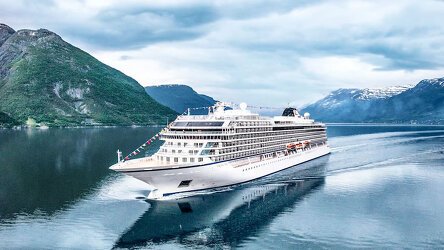
With her maiden voyage in 2022, the Viking Mars is an all-veranda ship, part of Viking's fleet of award winning ships incorporating all the comforts & luxuries you would expect from Viking. Read more

Viking are destination experts. With no casinos or children on board, you can be assured that the focus is firmly on enrichment and education. Read more
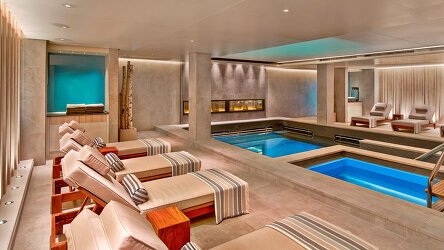
After a day of exploration or just to enhance the relaxation of a day at sea, the on-board Spa will leave you feeling recharged and revitalized. Read more

Viking offer eight on board dining options. Beer, wine and soft drinks are available with lunch and dinner at no additional charge of fee. Read more

Viking proudly includes all that you need and nothing you do not. A variety of features and services valued at $200 per person per day are standard inclusions in your cruise. Read more
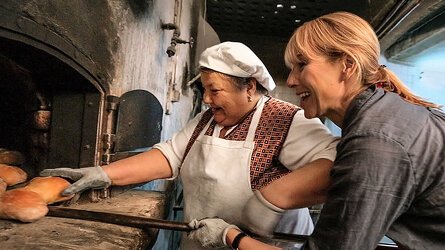
Viking include one complimentary shore excursion in every port of call. Enjoy exclusive entry to cultural treasures and seldom-seen collections around the world. Read more

Brochure

Viking River, Ocean & Expedition Voyages (2025-27)
Availability
 USD
Port charges, taxes and fees included.
USD
Port charges, taxes and fees included.
Viking Cruise $25 Deposits!
Tour & cruises prices are per person. Prices shown have savings applied, are subject to availability and may be withdrawn at any time without notice. Pricing and trip details are correct at this point in time, however are subject to confirmation at the time of booking and are subject to change by Viking. For cruise itineraries, cabin images are sourced from Viking. These should be treated as indicative only. Cabin inclusions, upholsteries and room layout may differ to the image(s) shown depending on the ship selected and your sailing dates.
